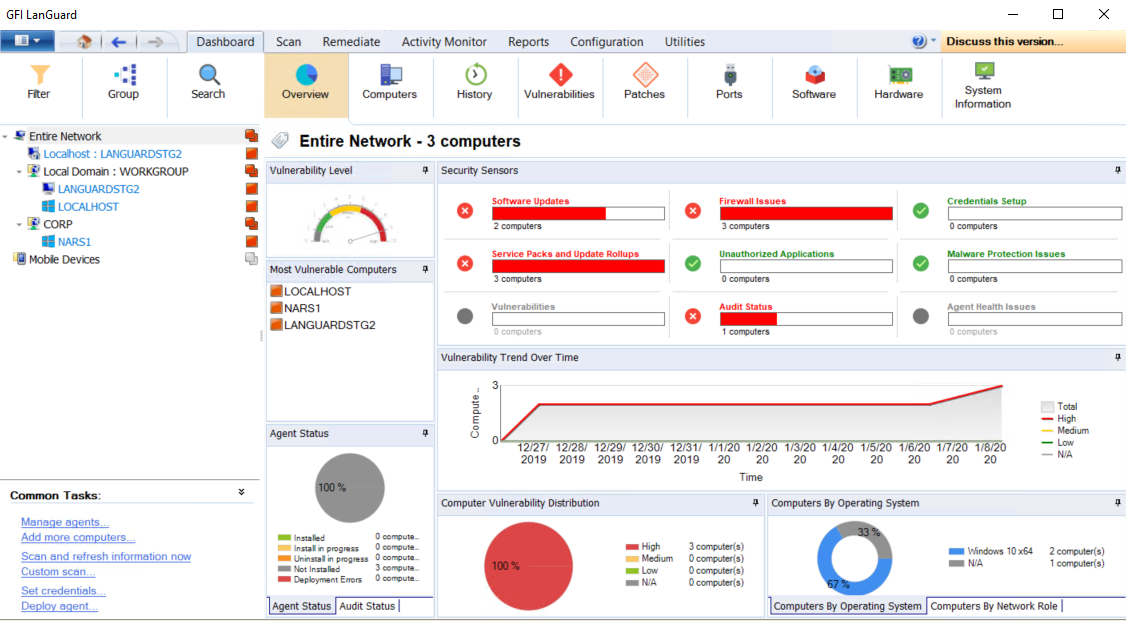- Business Manager is a Facebook tool that helps you organize and manage your business. When you join Business Manager, coworkers can't view your personal Facebook profile unless you.
- Zynq-7000 SoC Data Sheet: Overview DS190 (v1.11.1) July 2, 2018 www.xilinx.com Product Specification 5 Zynq-7000 Family Description The Zynq-7000 family offers the flexibility and scalability of an FPGA, while providi ng performance, power, and ease of use.
- Overview Medicare Beneficiary Identifiers (MBIs) We removed Social Security Number (SSN)-based Health Insurance Claim Numbers (HICNs) from Medicare cards and are now using Medicare Beneficiary Identifiers (MBIs) for Medicare transactions like billing, eligibility status, and claim status.
The Occupational Employment and Wage Statistics (OEWS) program conducts a semiannual survey designed to produce estimates of employment and wages for specific occupations. The OEWS program collects data on wage and salary workers in nonfarm establishments in order to produce employment and wage estimates for about 800 occupations.
The overview is probably the most important paragraph in the whole essay. In fact, as we will see later in this post, it is very difficult to score 7 or above without a good one.
An overview is simply a summary of the main or most important points in a graph, chart, process or map. It is normally 2-3 sentences long and should be the second paragraph you write in your essay. As we will see below, it also influences what you write in the rest of your essay.
Learn how to write a good one and you are much more likely to get a high score.
What does the examiner want?
An overview is one of the first things an examiner looks for because it shows them that you can identify the most important information from the graph or chart and clearly identify overall trends and comparisons.
If we look at the official marking scheme we can see that the word ‘overview’ is mentioned three times:
This means that to get at least a 5 for task achievement we must give some kind of overview. If we do not give any overview we will always get below a 5. If we select the appropriate data to include in our overview we get a score of 6 and if it is ‘clear’ we get a 7 for this part of the exam.
If you know how to select the appropriate data and you practice writing a clear overview, then you are likely to get the score you deserve in this section.
What is an overview?
To understand this we must look at the question. The question for academic task one is always the same:
Summarise the information by selecting and reporting the main features, and make comparisons where relevant.
We, therefore, need to provide a short summary of the main features. You do this in the overview paragraph by picking out 3-4 of the most significant things you can see and writing them in general terms. By general, I mean you do not support anything you see with data from the graph or chart, just write about what you can see visually.
How do I select the correct features?
To understand this we have to think about the different types of graphs and charts we might see. There are generally two different kinds of charts and graphs: dynamic and static.

Dynamic charts show data over time and static charts show data at just one point in time. This will affect the type of data we select.
When we are looking at dynamic graphs we should be looking out for:
Overview Meiosis
- What does the data do from the start to the finish?
- Do they generally go up or down or do they fluctuate?
- Any significant difference from the general trend?
- Overall increase/decrease?
- Peaks/lows?
When we look at static graphs we should be looking for:
- What are the highest/lowest values?
- What are the most noticeable differences?
- Any similarities?
- Any significant exceptions?
Is there any special grammar?
You should try and make a complex sentence by making a subordinate clause. Complex sentences are sentences with more than one clause and they help increase our marks in the grammatical range part of the marking criteria.
You can easily make a subordinate clause structure in the overview by joining two pieces of information with the words ‘while’. ‘although’, ‘with’, ‘even though’, ‘whereas’ or ‘and’. However, make sure you know the meaning of these words and how they are correctly used in a sentence.

How does an overview fit into the rest of my essay?

The overview should be the second paragraph of a four-paragraph structure:
Paragraph 1- Paraphrase Sentence
Paragraph 2- Overview
Paragraph 3- Details
Paragraph 4- Details
I tell my students to write the overview before the details because it makes it clear to the examiner that you have identified the main features and it also helps you write the details paragraph. In the details paragraphs, you will simply take the statements you made in the overview and support them with data.
Shouldn’t I write a conclusion?
No. Conclusions are really a summary of what you think or opinions. This is not an opinion essay and you, therefore, do not need to write a conclusion. Save your conclusions for task 2.

Example
Below is one final example following the structure I used above. I have highlighted the overview in yellow.
Notice how I have picked out the most significant/noticeable/important features and talked about them very generally in the overview. I have not used any data in the overview. However, I have taken the features from the overview and supported them with data in paragraphs 3 and 4.
Source: Cambridge English IELTS Past Papers.
Next Steps
I hope you found this post useful! If you have any questions please let me know in the comments section below.
Alternatively, always feel free to email us here: chris@ieltsadvantage.com.
You may also find my grammar guide for IELTS task 1 useful. It has lots of phrases to help you describe data.

For more help with IELTS Writing Task 1, check out my video lesson below:
Winston Smith is a low-ranking member of the ruling Party in London, in the nation of Oceania. Everywhere Winston goes, even his own home, the Party watches him through telescreens; everywhere he looks he sees the face of the Party’s seemingly omniscient leader, a figure known only as Big Brother. The Party controls everything in Oceania, even the people’s history and language. Currently, the Party is forcing the implementation of an invented language called Newspeak, which attempts to prevent political rebellion by eliminating all words related to it. Even thinking rebellious thoughts is illegal. Such thoughtcrime is, in fact, the worst of all crimes.
As the novel opens, Winston feels frustrated by the oppression and rigid control of the Party, which prohibits free thought, sex, and any expression of individuality. Winston dislikes the party and has illegally purchased a diary in which to write his criminal thoughts. He has also become fixated on a powerful Party member named O’Brien, whom Winston believes is a secret member of the Brotherhood—the mysterious, legendary group that works to overthrow the Party.
Winston works in the Ministry of Truth, where he alters historical records to fit the needs of the Party. He notices a coworker, a beautiful dark-haired girl, staring at him, and worries that she is an informant who will turn him in for his thoughtcrime. He is troubled by the Party’s control of history: the Party claims that Oceania has always been allied with Eastasia in a war against Eurasia, but Winston seems to recall a time when this was not true. The Party also claims that Emmanuel Goldstein, the alleged leader of the Brotherhood, is the most dangerous man alive, but this does not seem plausible to Winston. Winston spends his evenings wandering through the poorest neighborhoods in London, where the proletarians, or proles, live squalid lives, relatively free of Party monitoring.
One day, Winston receives a note from the dark-haired girl that reads “I love you.” She tells him her name, Julia, and they begin a covert affair, always on the lookout for signs of Party monitoring. Eventually they rent a room above the secondhand store in the prole district where Winston bought the diary. This relationship lasts for some time. Winston is sure that they will be caught and punished sooner or later (the fatalistic Winston knows that he has been doomed since he wrote his first diary entry), while Julia is more pragmatic and optimistic. As Winston’s affair with Julia progresses, his hatred for the Party grows more and more intense. At last, he receives the message that he has been waiting for: O’Brien wants to see him.
Winston and Julia travel to O’Brien’s luxurious apartment. As a member of the powerful Inner Party (Winston belongs to the Outer Party), O’Brien leads a life of luxury that Winston can only imagine. O’Brien confirms to Winston and Julia that, like them, he hates the Party, and says that he works against it as a member of the Brotherhood. He indoctrinates Winston and Julia into the Brotherhood, and gives Winston a copy of Emmanuel Goldstein’s book, the manifesto of the Brotherhood. Winston reads the book—an amalgam of several forms of class-based twentieth-century social theory—to Julia in the room above the store. Suddenly, soldiers barge in and seize them. Mr. Charrington, the proprietor of the store, is revealed as having been a member of the Thought Police all along.
Torn away from Julia and taken to a place called the Ministry of Love, Winston finds that O’Brien, too, is a Party spy who simply pretended to be a member of the Brotherhood in order to trap Winston into committing an open act of rebellion against the Party. O’Brien spends months torturing and brainwashing Winston, who struggles to resist. At last, O’Brien sends him to the dreaded Room 101, the final destination for anyone who opposes the Party. Here, O’Brien tells Winston that he will be forced to confront his worst fear. Throughout the novel, Winston has had recurring nightmares about rats; O’Brien now straps a cage full of rats onto Winston’s head and prepares to allow the rats to eat his face. Winston snaps, pleading with O’Brien to do it to Julia, not to him.
Overview
Giving up Julia is what O’Brien wanted from Winston all along. His spirit broken, Winston is released to the outside world. He meets Julia but no longer feels anything for her. He has accepted the Party entirely and has learned to love Big Brother.
